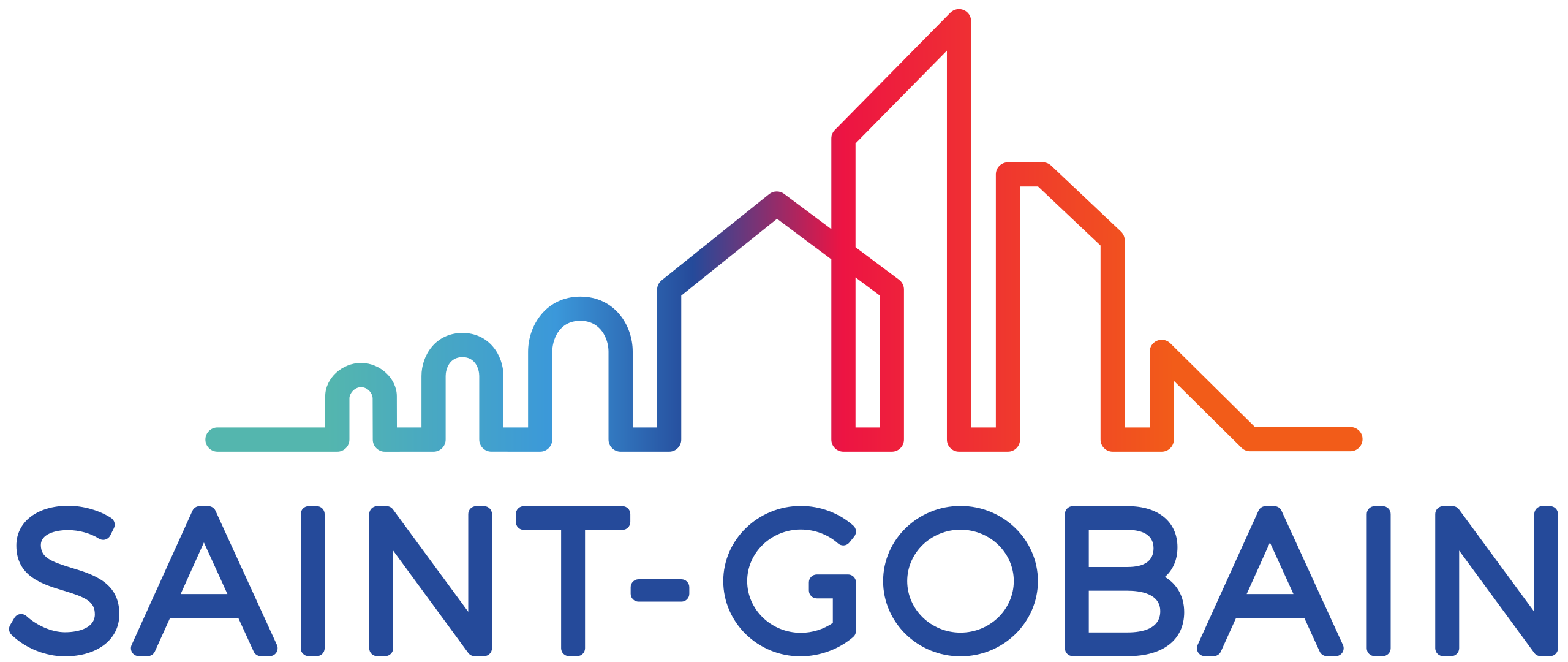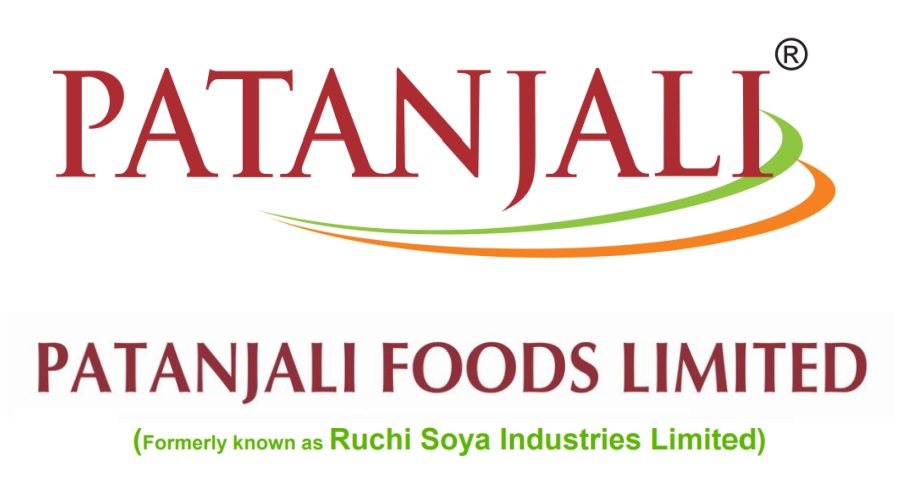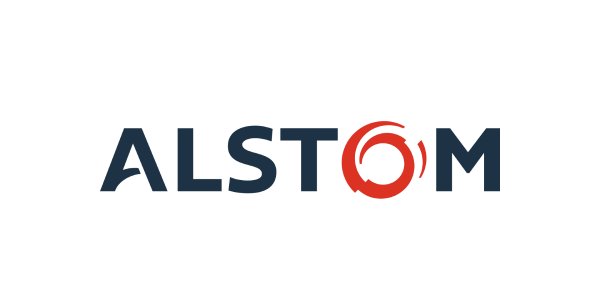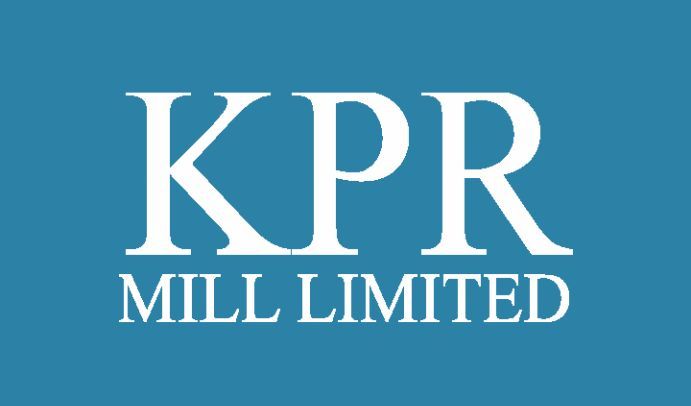Our Services
Bindal Agencies (P) Limited is proud to specialize in the buying and selling of the following scrips. We strive to provide our clients with top-notch services to ensure a seamless and successful transaction. Our team is dedicated to ensuring that every client receives expert guidance throughout the buying and selling process. We aim to maintain the highest level of professionalism and excellence in our operations to achieve our clients’ satisfaction.
E-RoDTEP
(Remission of Duties or Taxes on Export Products)
MEIS Scheme
(Merchandise Exports from India Scheme)
DGFT Services
New Import Export Code Application & Modification of IEC, Customs Registration for all MEIS & SEIS License.
E-RoSCTL
(The Rebate of State and Central Taxes Levies)
SEIS Scheme
(Service Export from India Scheme)
DFIA Scheme
(Duty Free Import Authorization)
ICEGATE Registration
Complete Process
Fill up the form below Our Team will assist you!
Looking to Buy Scrips?
Looking to Sell Scrips?
ABOUT SCHEMES
Outline
The RoDTEP (Remission of Duties and Taxes on Exported Products) Scheme was introduced by the Indian government in response to a complaint filed by the USA at the World Trade Organization (WTO). The USA argued that certain export subsidies provided by India, like the MEIS scheme, gave unfair advantages to Indian exporters, contravening WTO rules. As a result, India lost the case at the WTO, and in compliance with the ruling, it discontinued the MEIS scheme. To support Indian exporters while adhering to WTO regulations, the Finance Minister announced the RoDTEP Scheme in the Budget Speech on February 1, 2020. The RoDTEP Scheme was later approved by the Union Cabinet on March 13, 2020, and it became effective from January 1, 2021, lasting until 2025. The scheme aims to facilitate exports by providing suitable remission of duties and taxes on exported products, benefiting Indian exporters and ensuring WTO compliance.
About RoDTEP Scheme?
The RoDTEP Scheme is designed to provide exporters with refunds on embedded central, state, and local duties or taxes that were not previously reimbursed under existing schemes. By doing so, it aims to enhance India’s competitiveness in the global market over the next 5 to 10 years. The core principle of the scheme is to ensure that taxes and duties are not passed on to exporters but are either exempted or remitted to support their endeavors.
The implementation of the RoDTEP Scheme is expected to significantly impact India’s Customs and the Icegate Portal, streamlining and simplifying the process for exporters. On 17th August 2021, the Government released guidelines and benefit rates for 8555 tariff lines under the scheme. The rebate rate varies from 0.5% to 4% of the Free on Board (FOB) value, with specific value caps per unit for certain products.
The diagram below provides a historical perspective of the evolution of export promotion schemes, helping to better understand their development:
Aspects of RoDTEP Scheme:
Currently, only GST and import customs duties on inputs used in manufacturing export products are either exempted or refunded. This includes the availability of Input Tax Credit (ITC) for GST paid and the option to claim IGST refund on exported goods subject to duty. Import customs duties on raw materials can be exempted through the Advance Authorization scheme or refunded through the Duty Drawback scheme.
However, numerous other central and state government duties and taxes remain non-refundable. This results in additional costs for exported products, making Indian goods less competitive in the global market.
To address this issue, the RoDTEP Scheme was introduced. It aims to provide exporters with refunds for embedded central, state, and local duties or taxes that were previously not eligible for reimbursement under existing schemes. By doing so, it seeks to enhance the competitiveness of Indian products in the international market by reducing the cost burden on exporters and promoting a level playing field.
Reimbursement for Embedded Duties and Taxes.
The RoDTEP Scheme is designed to refund all the hidden taxes and levies that exporters currently bear, ensuring that they only export goods and services without exporting any kind of taxes. It encompasses various indirect central and state taxes that were not reimbursed under existing schemes. Some examples of these taxes include:
- Central and state taxes on fuel such as petrol, diesel, CNG, PNG, and coal cess used for transportation of export products.
- State duties levied on electricity used in the manufacturing process.
- Mandi tax imposed by Agricultural Produce Market Committees (APMCs).
- Toll tax and stamp duty related to import-export documentation, among others.
By refunding these previously unreimbursed taxes, the RoDTEP Scheme aims to reduce the cost burden on exporters, making Indian products more competitive in the global market. It ensures that exporters can focus solely on exporting goods and services, without having to bear the additional burden of various indirect taxes and levies. This comprehensive approach aims to create a more favorable environment for Indian exporters and boost their competitiveness on the international stage.
Excluded supplies/items/categories for RoDTEP scheme.
Under the RoDTEP Scheme, certain goods are considered ineligible for claiming benefits. The list of ineligible goods includes:
- Export of imported goods as specified in paragraph 2.46 of the Foreign Trade Policy (FTP).
- Goods that are restricted for export under “Schedule-2 of Export Policy in ITC (HS)”.
- Goods that are banned for export under “Schedule-2 of Export Policy in ITC (HS)”.
- Supplies of products manufactured through Domestic Tariff Area (DTA) units to Special Economic Zones (SEZ) or Free Trade and Warehousing Zones (FTWZ) units.
- Export of goods taken into use after manufacturing.
- Exports for which the electronic documentation in ICEGATE EDI (Indian Customs Electronic Data Interchange System) has not been completed.
- Goods exported claiming the benefits of notification No. 32/1997-Customs dated 1st April 1997.
- Goods exported from Free Trade Zones (FTZ), Export Processing Zones (EPZ), or Special Economic Zones (SEZ).
- Goods obtained or exported through Export Oriented Units (EOU) and produced in Electronic Hardware Technology Parks (EHTP) and Bio-Technology Parks (BTP).
- Deemed Exports.
- Export goods subjected to a minimum export price or export tax.
- Products manufactured partly or wholly in a warehouse under section 65 of the Customs Act, 1962 (52 of 1962).
- Goods exported under Advance License/Special Advance License or Duty-Free Import Authorization.
These exclusions are put in place to ensure that the benefits of the RoDTEP Scheme are directed appropriately and to maintain the integrity of the scheme.
RoDTEP Scheme Introduced for Chemicals, Pharmaceuticals, Iron & Steel Exporters.
The RoDTEP scheme has been extended to benefit Chemical, Pharma, and Iron & Steel exporters, covering chapters 28, 29, 30, and 73 of the ITC HS code.
The Rate of Incentive offered under the scheme ranges from 0.5% to 2%, depending on the specific ITC HS code of the exported item. The majority of the items are eligible for a 0.8% incentive.
It’s important to note that this scheme will be applicable for exports made after 15th December 2022 until 30th September 2023, as per the current notification.
Exporters are advised to ensure all necessary declarations are made at the time of filing shipping bills and to tick “YES” for RoDTEP to claim the incentives.
To claim RoDTEP incentives, exporters are required to obtain a Class – 3 Digital Signature and complete mandatory registration on the Icegate website.
By complying with these requirements, exporters can take advantage of the RoDTEP Scheme’s benefits and enhance their competitiveness in the international market.
Procedure for Generating E-RoDTEP Scrips.
To generate Scrips under the RoDTEP Scheme, users need to follow these steps:
Step 1: Access the E Scrip Home Page and select the “SB Details” Tab for scrip generation.
Step 2: Choose the Shipping bills/scrolls for which the scrips are required. Select “RoDTEP” under the scheme name and location.
Step 3: Ensure that the scheme is selected as it is a mandatory field; otherwise, an error message will be displayed.
Step 4: View and select the shipping bills, and then click on the “Generate Scrip” button to initiate scrip generation. Alternatively, users can select all shipping bills at once by checking the box in the first row.
Step 5: After successful Scrip Creation, a confirmation message will be displayed on the screen.
For Scrip generation, please refer to Advisory No. 06/2021 dated 01.10.2021 from the Directorate General of Systems and Data Management, CBIC for detailed guidance.
Outline:
The RoSCTL Scheme, which stands for “Scheme for Rebate of State and Central Taxes and Levies on Export of Garments and Made-ups,” was introduced by the Ministry of Textiles to replace the previous “Rebate of State Levies (RoSL) Scheme.” It aims to enhance the competitiveness of the apparel and made-ups sectors by providing rebates on all embedded state and central taxes and levies on their exports. The scheme covers garments (Chapter 61 and 62) and made-ups (Chapter 63), excluding the RoDTEP benefit for these chapters. It came into effect on 7th March 2019 and will remain in force until 31st March 2024.
Procedure for Availing Benefits from ICE Gate Portal
Exporters can access the benefits of the RoSCTL Scheme by making claims in the EDI shipping bill using designated scheme codes. The options for the RoSCTL scheme are being provided with separate scheme-code as listed below –
Key Highlights of the RoSCTL Scheme
- – RoSCTL scheme requires timely realization of foreign remittance for shipments as per FEMA regulations.
- – Failure to realize sales proceeds within the allowed time will result in the return of all RoSCTL benefits with 15% annual interest.
- – Exporters must maintain all original export documents and shipping bills for a period of 3 years from the date of issuance of RoSCTL scrips.
- – Non-submission of requested original documents to the licensing authority will lead to the obligation of returning the entire benefit with applicable interest.
Compensation of Taxes for Exporters in RoSCTL Scheme
The scheme aims to provide a rebate on both State and Central Taxes and Levies for exports of apparel/garments and Made-ups. The rebate covers various components, including VAT on fuel used in transportation, electricity duty, stamp duty on export documents, and SGST paid on inputs like pesticides and fertilizers used in raw cotton production, among others. Additionally, the rebate covers central excise duty on fuel used in transportation, CGST on inputs for raw cotton production, purchases from unregistered dealers, and CGST and Compensation Cess on coal used in electricity production.
Step-by-Step Procedure for Generating E-ROSCTL Scrips
The procedure for generating Scrips has been provided in Advisory No. 06/2021 dated 01.10.2021 by the Directorate General of Systems and Data Management, CBIC. Here are the step-by-step instructions:
Step 1: Go to the E Scrip Home Page and click on the “SB Details” Tab to initiate scrip generation.
Step 2: Select the Shipping bills/scrolls for which you want to generate the scrips. Choose “ROSCTL” under scheme name and provide the location.
Step 3: Ensure that you have selected the scheme (ROSCTL) as it is a mandatory field. An error message will appear if this step is skipped.
Step 4: View and select the shipping bills you want to include, then click on the “Generate Scrip” button. You can select all shipping bills at once by checking the box in the first row.
Step 5: The Scrip will be generated for the selected shipping bill/scroll. Upon successful Scrip Creation, a confirmation message will be displayed on the screen.
Overview:
The Merchandise Exports from India Scheme (MEIS Scheme) is an export incentive program introduced under the Foreign Trade Policy 2015-20, which began on 1st April 2015 and is valid until December 2020. Its main purpose is to boost Indian exports by providing incentives ranging from 2-7% of the FOB value for specific products. These incentives aim to make Indian goods more competitive globally by offsetting export-related costs and infrastructural inefficiencies.
MEIS focuses on products with high export intensity, the potential to generate employment, and the ability to enhance the competitiveness of Indian goods in international markets. The scheme rewards exporters with Duty credit scrips or MEIS Licenses, which can be used to pay import duties or sold in the market at a premium rate.
MEIS replaced five earlier export incentive schemes under the Foreign Trade Policy (FTP) 2009-14, including the Focus Market Scheme, Focus Product Scheme, Vishesh Krishi Gramin Udyog Yojana, Market Linked Focus Product Scheme, and Agri Infrastructure incentive scheme. By merging these schemes into MEIS, various restrictions were removed, and the scope of export incentives was significantly expanded.
The MEIS scheme also allows exports from Special Economic Zone (SEZ) units to avail of its benefits, which was not possible under previous incentive schemes. Exporters can only avail of benefits for eligible goods as notified in Appendix 3B.
Eligibility for MEIS Scheme
Eligibility Criteria for MEIS Scheme:
- All exporters from India, including merchant exporters and manufacturer exporters, can claim incentives under the MEIS Scheme if they export products listed in Appendix 3B – MEIS Schedule.
- The eligibility is based solely on the product exported and is not dependent on the country of export, as the MEIS Scheme is applicable to all countries.
- Special Economic Zone (SEZ) Units and Export Oriented Units (EOUs) are also eligible to claim benefits under the MEIS Scheme.
- There is no minimum turnover requirement to claim MEIS incentives.
- Goods exported through e-commerce platforms via courier are eligible for the scheme.
- The exported products must have the country of origin as India; re-exported products are not eligible.
- Only Shipping Bills with a “Declaration of Intent” and “YES” ticked in the Scheme reward option are eligible for the MEIS Scheme.
Nature of Rewards in MEIS Scheme
Under the MEIS scheme, exporters receive incentives in the form of Duty Credit Scrip or License, which are freely transferable. If the License holder decides to sell the License, they can do so to any interested party who wishes to use the License to waive their import duty.
MEIS Scheme Rates
Under the MEIS scheme, the benefits are calculated as a percentage of the Free on Board (FOB) value of exports for specific goods sent to designated markets. The incentive rates differ based on the product and the destination country. These rates are mentioned in Appendix 3B of the Foreign Trade Policy (FTP), categorized according to the ITC(HS) code. The MEIS reward rates range from 2% to 5% for most items, and in some cases, it can be as high as 7%.
A recent amendment has eliminated country-wise differentiation, extending the market coverage to all countries for MEIS incentives. This means that exporters can avail of the benefits for exports to any country without country-based restrictions.
Ineligible Categories for MEIS Scheme
Here are the export categories not eligible for the MEIS scheme:
– Supplies from Domestic Tariff Area (DTA) to Special Economic Zone (SEZ) units.
– Export of imported goods covered under paragraph 2.46 of FTP.
– SEZ/EHTP/EOU/BTP/FTWZ products exported through DTA units.
– Exports initiated by units in Free Trade and Warehousing Zones (FTWZ).
– Deemed Exports.
– Export products subject to Minimum export price or export duty.
– Trans-shipment exports, originating in a third country but trans-shipped through India.
– Red sanders/beach sand.
– Gold, Silver, Platinum.
– Diamond or any other precious metal in any form and other precious and semi-precious stones.
– Crude or Petroleum products of all types and formulations.
– All types of cereal.
– All types of ores and concentrates.
– All types and forms of sugar.
– Export of Meat & Products of Meat.
– Export of milk and its products.
MEIS Scheme Application Documents
Here are the necessary documents for the MEIS Scheme:
– Shipping bills
– RCMC (Registration Cum Membership Certificate)
– EBRC (Electronic Bank Realization Certificate)
Preparing and organizing these documents is a crucial task, and our dedicated teams ensure maximum efficiency in handling each aspect. For submitting an online application under the MEIS scheme, a DGFT Digital Signature Certificate is also necessary. We possess an in-house team to facilitate the preparation of DGFT DSC and RCMC, ensuring a seamless process for obtaining the MEIS License.
Applying for MEIS Scheme Online – Procedure for MEIS Scheme Application
To apply online, visit the DGFT website (www.dgft.gov.in) and use your Digital Signature Certificate. Choose “Online E-com Application” under the Services Tab.
Complete the online application in line with Form ANF-3A, ensuring linkage to relevant shipping bills and e-BRC.
Each application can accommodate up to 50 shipping bills.
Manual data entry for EDI shipments is not allowed.
Benefits are determined by the Let Export Order date.
After thorough scrutiny, DGFT processes the application and issues the Scrip.
Keep the documents for 3 years from the License issue date. DGFT may request these originals within this timeframe.
This procedure applies to all MEIS cases except for e-commerce exports.
This Scheme was discontinued in 31st December 2020.
Outline:
The Service Export from India Scheme (SEIS) is an incentive provided by the Ministry of Commerce through the Directorate General of Foreign Trade (DGFT) to Indian service exporters. This scheme aims to promote the export of services from India.
Introduced on 1st April 2015 under the Foreign Trade Policy of India 2015-2020, SEIS replaced the Served from India Scheme (SFIS) for the period 2009-2014. SEIS supports the export of selected services through four modes of delivery to foreign clients.
Its primary objective is to enhance and optimize the export of designated services from India. Under the SEIS Scheme, eligible service exporters can receive incentives of 3%, 5%, or 7% on the Net Foreign Exchange earned, provided in the form of Duty Credit Scrips. These scrips can be utilized for Import duty payment or can be sold to an importer, effectively functioning as a cash incentive scheme.
Eligibility for SEIS Scheme
Eligibility for the SEIS Scheme is limited to services provided in Mode 1 and Mode 2, with Mode 3 and Mode 4 services ineligible for SEIS incentives.
Here’s a breakdown of the four modes of service export:
Mode 1 – Cross Border Trade (Service supplied from India to another country):
– Example: An Indian audit firm sends audited accounts to a foreign company in London, qualifying as “Accounting & Auditing Services.”
– Example: An Indian company conducts market research for a foreign company in the UAE, qualifying as “Market research Services.”
Mode 2 – Consumption Abroad (Service supplied from India to a service consumer in India):
– Example: A foreign tourist from America staying at an Indian 5-star hotel and paying for accommodation and food using international credit cards, qualifying as “Hotel Services.”
– Example: An Indian tour operator sells travel packages to foreign tourists visiting India, qualifying as “Travel agencies and Tour operator Services.”
Mode 3 – Commercial Presence (Service supplied from India through a commercial presence in another country):
– Example: An Indian company with an office in Singapore providing Engineering Services to clients in Singapore. Involves physical presence of an Indian company in foreign countries.
Mode 4 – Presence of Natural Persons (Service supplied from India through the presence of individuals in another country):
– Example: An Indian doctor performing surgery for a patient in the USA.
– Example: An Indian consultant providing services by visiting a client in the UK.
Ineligible Categories for SEIS Scheme
Eligibility for the SEIS Scheme is limited to services provided in Mode 1 and Mode 2, with Mode 3 and Mode 4 services ineligible for SEIS incentives.
Here’s a breakdown of the four modes of service export:
Mode 1 – Cross Border Trade (Service supplied from India to another country):
– Example: An Indian audit firm sends audited accounts to a foreign company in London, qualifying as “Accounting & Auditing Services.”
– Example: An Indian company conducts market research for a foreign company in the UAE, qualifying as “Market research Services.”
Mode 2 – Consumption Abroad (Service supplied from India to a service consumer in India):
– Example: A foreign tourist from America staying at an Indian 5-star hotel and paying for accommodation and food using international credit cards, qualifying as “Hotel Services.”
– Example: An Indian tour operator sells travel packages to foreign tourists visiting India, qualifying as “Travel agencies and Tour operator Services.”
Mode 3 – Commercial Presence (Service supplied from India through a commercial presence in another country):
– Example: An Indian company with an office in Singapore providing Engineering Services to clients in Singapore. Involves physical presence of an Indian company in foreign countries.
Mode 4 – Presence of Natural Persons (Service supplied from India through the presence of individuals in another country):
– Example: An Indian doctor performing surgery for a patient in the USA.
– Example: An Indian consultant providing services by visiting a client in the UK.
SEIS Scheme Document Checklist
Required Documents for SEIS Scheme Application:
– Importer Exporter Code (IEC Code)
– Application form ANF-3B (Aayat Niryat Form)
– CA Certificate
– Statement demonstrating the relationship between Invoices and Foreign Inward Remittance Certificates (FIRC) (Table No 4)
– Description of Services
– Self-Certified copy of invoice and FIRC
– DGFT Digital Signature Certificate (DSC)
– Copy of Registration Cum Membership Certificate (RCMC)
– Essential Declarations
SEIS Scheme Application Procedure
After understanding the essential information, terms, conditions, and the document checklist for the SEIS Scheme, let’s briefly explore the online process to submit the SEIS application.
Key Points to Note:
– Apply for SEIS with your DGFT Digital Signature at your jurisdictional DGFT office.
– Each exporter can file one application per financial year.
– Claims must be made within 12 months from the financial year’s end to avoid late fees.
– Claims made after 12 months will attract penalties.
– Claims beyond 3 years from the financial year’s end will be rejected. For instance, the deadline to claim for FY 2017-18 is 31.03.2021.
– Start by submitting the SEIS application online through the DGFT website, followed by physical document submission.
– SEIS Scrips remain valid for 24 months.
Online Application Process for SEIS Scheme
To access the DGFT website, follow these steps:
- Go to www.dgft.gov.in.
- Click on the “Services” option, then choose “Online Ecom Application.”
- A new browser tab will open. Navigate to the SEIS for 2017-2018 & 2018-2019 section.
- Attach your DGFT Digital Signature Certificate (DSC).
- Log in using your credentials. The application form will appear.
Once you’re on the application form:
- Select your preferred option.
- Complete the required details and fill out the form.
- If you are exporting multiple services, classify them according to Appendix 3D and indicate the “Service Category Information” in the ANF 3B form.
This Scheme was discontinued by Government of India in 31st December 2020.
Outline:
Duty exemption schemes within the Foreign Trade Policy were introduced to facilitate the duty-free import of essential raw materials or inputs needed for manufacturing export goods, streamlining the process for exporters.
The DFIA scheme, initiated on 1st May 2006 in place of the Duty-Free Replenishment (DFRC) scheme, closely resembles the Advance Authorisation Scheme while having some distinctions.
Under the DFIA scheme, the issued license permits duty-free import of various necessities such as inputs, raw materials, energy resources, oil, fuel, and catalysts, all essential for producing export items.
DFIA licenses are granted exclusively for products with established Standard Input and Output Norms (SION). Consequently, the import entitlement must align with the quantities specified in the SION.
A notable feature of the DFIA License is its transferability, allowing both the license and the imported inputs to be transferred or sold as per the DFIA Scheme guidelines.
Exempted Duties in DFIA Scheme
The Duty-Free Import Authorisation scheme offers an exemption solely on the payment of basic customs duty (BCD).
However, it’s important to note that the Integrated Goods and Services Tax (IGST) and compensation Cess are not exempted under the DFIA scheme.
DFIA Scheme Eligibility
The DFIA license is granted post-export for products with existing standard Input-Output Norms.
Both manufacturer exporters and merchant exporters can seek the DFIA License. Merchant exporters need to specify the name and address of the supporting manufacturer in all export documents, following GST rules.
Before commencing export under duty-free import authorization, applicants must submit an application to the respective DGFT RA.
Notably, the duty-free import authorization won’t be issued for imports subject to pre-import conditions. Additionally, the DFIA license won’t be granted for items falling under actual user conditions or those listed in Appendix-4J, such as Spices, Tea, Coconut oil, and precious metals like Gold, Silver, and Platinum.
Minimum Value Addition in DFIA Scheme
The calculation for Value Addition is as follows:
Value Addition = (A – B) / B
Where:
– A = FOB value of export realized or FOR value of supply received.
– B = CIF value of inputs covered by the authorization, plus the value of any other input used, for which benefit of Duty Drawback (DBK) is claimed or intended.
The DFIA License mandates a minimum Value Addition of 20%.
DFIA Scheme Procedure – Steps for Duty-Free Import Authorisation
Here is the step-by-step process for the Duty-Free Import Authorization scheme:
Step 1: Verify if the exported item is eligible for DFIA as per SION norms.
Step 2: If eligible, file an online application on the DGFT portal and obtain a File number.
Step 3: Complete the export within 12 months from the file number issuance date.
Step 4: Mention the generated file number on all export documents (shipping bill, tax invoice, bill of export, etc.).
Step 5: After fulfilling export obligations, apply for a transferable DFIA license.
Step 6: Submit relevant documents (shipping bill, E-BRC, tax invoice, etc.) to the concerned DGFT RA.
Step 7: DGFT RA reviews the submitted documents. If clear, they issue the transferable DFIA license within 20-25 days.
Step 8: Register the DFIA license with customs for verification upon issuance.
Step 9: Utilize the DFIA license for import or opt to sell it in the market.
DFIA Validity and Transferability
The transferable duty-free import authorization for imports remains valid for 12 months from the date of issuance by the DGFT RA. Revalidation by the DGFT RA is not permitted. Each Standard Input Output Norms (SION) will have a separate DFIA application issued.
Guidance on Streamlined Registration Process at ICEGATE
Currently, the ICEGATE website facilitates IEC (Importer Exporter Code) registration, which involves utilizing a Digital Signature and awaiting approval. Those successfully registered with IEC are granted the capability to file documents on the ICEGATE platform.
In order to attract more importers and exporters to register on ICEGATE and provide them access to diverse information services, including reports, we recognize the necessity of introducing a Simplified Auto Registration process. This simplified process is centered around the IEC and GSTIN (Goods and Services Tax Identification Number), requiring the verification of email and mobile numbers through OTP.
The simplified registration module within ICEGATE has been meticulously designed to enable registration without the need for Digital Signature Certificate (DSC) uploads, PAN verification, document submission to ICEGATE, or undergoing an approval procedure.
It’s important to note that IEC holders who opt for registration under the Simplified Auto Registration category will not have the authorization to file Customs documents.
The various scenarios encompassing the simplified registration process are elucidated further in the following sections, supported by a comprehensive demonstration.
Case 1
- Access Registration: To begin the registration process as a new user, navigate to the designated “Simplified Registration” link.
- Input Details: Upon clicking the link, you’ll be directed to a new page. On this page, you are required to provide the following details:
- IEC (Importer Exporter Code)
- GSTIN (Goods and Services Tax Identification Number)
- Temporary password received from ICEGATE
- ICEGATE ID and Password: After successfully completing Step 2, proceed to enter the following information:
- Choose an ICEGATE ID and create a password of your choice.
- Your email ID and mobile number will be automatically populated.
- Ensure that your selected ICEGATE ID is unique and adheres to the prescribed ICEGATE ID format mentioned on the page.
- Create a robust password with a combination of numbers, special characters, and both upper and lower-case letters.
- Data Validation Error: If the details provided do not match the required data on ICEGATE, an error message will be displayed on the page.
- OTP Authentication: Upon successful validation in Step 3, you will be redirected to an OTP authentication page.
- Two separate OTPs will be sent to the mobile number and email address provided in the previous step.
- Invalid OTPs: If any of the OTPs entered are invalid, an error message will be displayed.
- Successful OTP Verification: Once the OTPs are verified successfully, you will be presented with the following page.
- Completion or Modifications: At this stage, you have two options:
- Complete the process as is.
- Choose to proceed and update the mobile number and email address associated with your IEC and GSTIN for the selected ICEGATE I
Case 1.1
If the user intends to finalize the process without altering their email ID and mobile number, they should follow these steps:
- Once on the designated page, click on the “Finish” button.
- Upon clicking “Finish,” a confirmation prompt will appear.
- Clicking “OK” will trigger the display of a success message. This signifies the successful completion of the simplified registration process.
- At this point, the simplified registration process concludes. To proceed, kindly log in using the newly generated ICEGATE ID.
This concludes the simplified registration process. Should you have any further inquiries or require assistance, our support team is readily available to assist you.
Case 1.2
In the event that the user opts to modify their email ID and mobile number for communication purposes with the newly generated ICEGATE ID, they should follow these steps:
- On the corresponding page, locate and click the provided “Click here” link.
- By clicking the link, a textbox will appear, allowing the user to enter their desired Alternate Email ID and Alternate Mobile Number.
- Both fields are mandatory, requiring completion before proceeding.
- Upon submitting the information, an OTP will be dispatched to the registered email and mobile number for verification purposes.
- Verification of both the Alternate Mobile OTP and Email OTP is compulsory.
- If any of the entered OTPs are invalid, a relevant message will be displayed, guiding the user appropriately.
- Upon successful validation of all OTPs, a confirmation message will appear, signifying the successful conclusion of the simplified registration process.
- With this, the simplified registration process is finalized. The registrant is now able to log in to ICEGATE using the newly generated ID.
Case 2
In situations where the user has received the Mobile OTP and Email OTP, yet verification was not successfully completed due to session timeouts or other issues, the following steps guide the user to reinitiate the process:
- Locate and click the link labeled ‘If you already have Mobile and Email OTP’s, please “Click Here”.’
- Clicking this link leads to the display of the subsequent page.
- Here, provide your IEC Number, GSTIN Number, Mobile OTP, and Email OTP. Upon filling these fields, click the “Submit” button.
- After submission, the ensuing page will appear.
- At this juncture, two options are presented:
- Finishing the Process (Case 1.1): As detailed in CASE 1.1, the user can opt to finalize the process.
- Changing Email and Mobile Number (Case 1.2): Alternatively, the user can update their email ID and mobile number as elaborated in CASE 1.2.
- Suppose the user wishes to alter their email ID and mobile number, but due to an issue, they are unable to input the mobile OTP and email OTP during the process. In that case, they can follow a process analogous to CASE 2.
- It is crucial to note that the mobile and email OTPs have a validity period of 2 hours from generation. Should verification not be completed within this timeframe, the user will need to commence the process anew as elucidated in CASE 1.
This comprehensive approach ensures that users can effectively manage OTP verification and continue their registration process while adhering to time constraints. Should any further clarifications be required, our dedicated support team remains at your disposal.
Trust and Worth
Our Major Importer Clients












Our Major Exporter Clients











Get In Touch With Us!
Phone
+91 98417 66608
contact@bindalindia.com
Address
Bindal Agencies (P) Limited.
FF1 Manchester Court, 21/11, Club Road, Chetpet, Chennai 600031